CONFUCIANISM AND TAOISM
CONFUCIANISM:
Confucianism, also known as Ruism, is described as tradition, a philosophy, a religion, a humanistic or rationalistic religion, a way of governing, or simply a way of life. Confucianism developed from what was later called the Hundred Schools of Thought from the teachings of the Chinese philosopher Confucius (551–479 BCE), who considered himself a recodifier and retransmitter of theology and values inherited from the Shang and Zhou dynasty.
Confucianism (rujiao) is a way of life taught by Confucius (Kong Fuzi) in China in the 6th-5th century BCE and the rituals and traditions associated with him. "Confucius," the common name of Confucianism's founder, is a Latinized form of the Chinese K'ung-fu-tzu, "Master K'ung." The terms "Confucianism" and "Confucian" are not meaningful terms in Chinese.
Sometimes viewed as a philosophy, sometimes as a religion, Confucianism is perhaps best understood as an all-encompassing humanism that is compatible with other forms of religion.
Text:
The Lun-yü (Analects) are the most revered sacred scripture in the Confucian tradition. It was probably compiled by the second generation of Confucius' disciples. Based primarily on the Master's sayings, preserved in both oral and written transmissions, it captures the Confucian spirit in the same way that the Platonic dialogues embody Socratic teachings.
The Four Books are:
-
Lun Yu (Analects) of Confucius
-
Chung Yung (Doctrine of the Mean)
-
Ta Hsueh (Great Learning)
-
Meng Tzu (Mencius)
Beliefs and Practices:
Confucianism concerns itself primarily with ethical principles and does not address many traditional religious beliefs. These are generally provided by Chinese religion, Taoism, Buddhism, or other religion which Confucians follow. However, Confucius regarded Heaven (T'ien) as a positive and personal force in the universe; he was not, as some have supposed, an agnostic or a skeptic. He also taught a highly optimistic view of human nature and potential. Aside from its beliefs, Confucianism does not prescribe any specific rituals or practices. These are filled by the practices of Chinese religion, Taoism, Buddhism, or other religion which Confucians follow.
Symbols:
(WATER) (SCHOLAR) (Yin-Yang)
The symbol most commonly used to represent Confucianism is probably the Chinese character for water, which represents life. Other symbols commonly used to represent Confucianism include the Chinese character for "scholar" as well as the yin-yang symbol (shared with Taoism) and portraits of Confucius.
Ethics:
The main principle of Confucianism is:
-
Ren ("humaneness" or "benevolence")
-
Li (ritual norms)
-
Zhong (loyalty to one's true nature)
-
Shu (reciprocity)
-
Xiao (filial piety).

Taoism (Daoism):
Taoism also known as Daoism, is a religious or philosophical tradition of Chinese origin which emphasizes living in harmony with the Tao (also known as the "Dao") which means the way. Taoism originated in China 2000 years ago. It is a religion of unity and opposites; Yin and Yang. The principle of Yin Yang sees the world as filled with complementary forces - action and non-action, light and dark, hot and cold, and so on.
The Tao:
The Tao cannot be described in words. The Tao is not a thing or a substance in the conventional sense. The Tao is not God and is not worshipped. Taoism does include many deities, but although these are worshipped in Taoist temples, they are part of the universe and depend, like everything, on the Tao. It might be more helpful to regard Tao as a system of guidance. And if one does this one can translate 'achieving union with the Tao' into 'developing oneself so as to live in complete conformity with the teachings of the Tao' which is easier to understand, and closer to the truth.
The People:
-
Lao Tzu (Laozi) is traditionally described as the founder of Taoism, but modern writers think he is a legendary figure, and that the book attributed to him. The key book of Taoism was compiled around the 3rd century BCE. It's called the Tao Te Ching (Dao De Jing or Daode Jing) - The Way and Its Power, and is also known as the Lao-tzu.
-
Chuang Tzu (Zhuangzi) has a book attributed to him, called the Chuang-Tzu after the practice of referring to Chinese texts by the names of their authors.
Practices and Beliefs:
This religious Taoism had its own temples, priests, rites and symbolic images. Lao Tsu was venerated as a “saint” and imperial sacrifices were made him to him. It drew strongly upon the ideas of yin-yang and of the ‘Five Agents’ (metal, wood, water, fire and earth). Taoism is a religious belief practiced by those who follow the teachings of the Chinese philosopher Lao Tzu who was born in 300BC.
Symbols:
The taijitu (simplified Chinese: ; traditional Chinese: ; pinyin: tàijítú; commonly known as the "yin and yang symbol" or simply the "yin yang") and the bagua ("Eight Trigrams") have importance in Taoist symbolism. In this cosmology, the universe creates itself out of a primary chaos of material energy, organized into the cycles of Yin and Yang and formed into objects and lives. Yin is the receptive and Yang is the active principle, seen in all forms change and difference such as the annual season cycles, the landscape, sexual coupling, the formation of both men and women as characters, and sociopolitical history.
Subdivisions of Taoism
Modern Taoism falls into main categories: 'Southern' Taoism, popular in Taiwan and South China and 'Northern' Taoism, a tradition largely unknown to Westerners but widely practised among modern Taoists in mainland China.
-
Southern Taoism - is an offshoot of Cheng-i Taoism, the only liturgical tradition surviving today.
-
Northern Taoism - grew out of the Ch'üan-chen tradition. It was founded in the 12th century by Wang Chu'ung-yang. It emphasises moral and spiritual discipline and also continues self-preservation practices that date back to the classical Nei-yeh. Its headquarters are at White Cloud Abbey in Beijing.
Taoism emphasizes spiritual harmony within the individual, complementing Confucianism's focus on social duty. The two great Chinese belief systems were founded at about the same time and continue to exist side-by-side in today's China.




